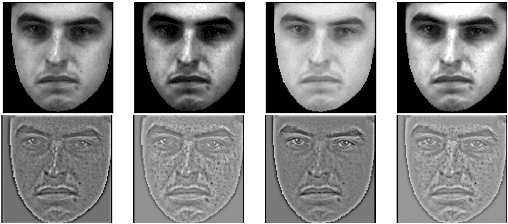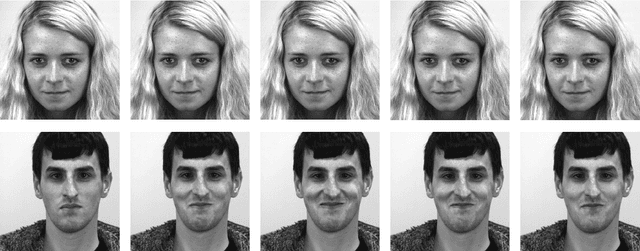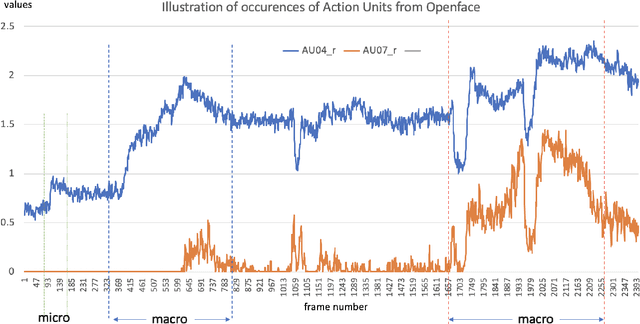Chuin Hong Yap
3D-CNN for Facial Micro- and Macro-expression Spotting on Long Video Sequences using Temporal Oriented Reference Frame
Jun 10, 2021



Abstract:Facial expression spotting is the preliminary step for micro- and macro-expression analysis. The task of reliably spotting such expressions in video sequences is currently unsolved. The current best systems depend upon optical flow methods to extract regional motion features, before categorisation of that motion into a specific class of facial movement. Optical flow is susceptible to drift error, which introduces a serious problem for motions with long-term dependencies, such as high frame-rate macro-expression. We propose a purely deep learning solution which, rather than track frame differential motion, compares via a convolutional model, each frame with two temporally local reference frames. Reference frames are sampled according to calculated micro- and macro-expression durations. We show that our solution achieves state-of-the-art performance (F1-score of 0.126) in a dataset of high frame-rate (200 fps) long video sequences (SAMM-LV) and is competitive in a low frame-rate (30 fps) dataset (CAS(ME)2). In this paper, we document our deep learning model and parameters, including how we use local contrast normalisation, which we show is critical for optimal results. We surpass a limitation in existing methods, and advance the state of deep learning in the domain of facial expression spotting.
SAMM Long Videos: A Spontaneous Facial Micro- and Macro-Expressions Dataset
Nov 04, 2019



Abstract:With the growth of popularity of facial microexpressions in recent years, the demand for long videos with micro- and macro-expressions is increasing. Extended from SAMM, a micro-expressions dataset released in 2016, this short report presents SAMM Long Videos dataset for spontaneous micro- and macro-expressions recognition and spotting. SAMM Long Videos dataset consists of 147 long videos with 343 macro-expressions and 159 micro-expressions. The dataset isFACS-coded with detailed Action Units (AUs). We compareour dataset with the Chinese Academy of Sciences MacroExpressions and Micro-Expressions (CAS(ME)2) dataset, which is the only available fully annotated dataset with micro- and macro-expressions. Further, we preprocess the long videos using OpenFace, which includes face alignment and detection of facial movements based on the AUs. We will release the long videos for the next micro-expressions, and macro-expressions spotting challenge and future research uses.
 Add to Chrome
Add to Chrome Add to Firefox
Add to Firefox Add to Edge
Add to Edge